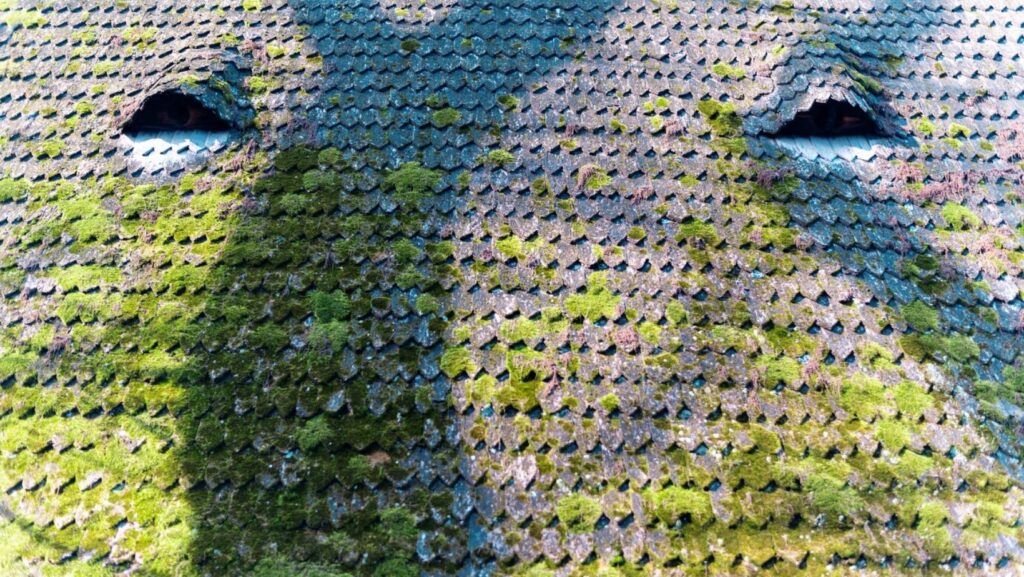Roof cleaning is often overlooked in routine home maintenance, yet it is crucial for preserving the integrity and aesthetics of your home. Over time, roofing systems can become a breeding ground for moss, mold, and mildew, each of which poses its own set of challenges and risks.
Understanding these growths and the importance of managing them can save homeowners significant time, money, and health risks.
What Are Moss, Mold, and Mildew?
Moss, mold, and mildew are common biological growths found in moist environments, but they differ significantly in their biology and the damage they can cause. Moss is a non-vascular plant that forms green, thick mats on roofs, especially in shaded and damp areas.
Unlike moss, mold, and mildew are types of fungi. Mold appears in black or green patches and thrives in continuously moist conditions. Mildew, often white or gray, typically grows flat against surfaces and is usually found in less saturated but still damp environments.
Dangers of Ignoring These Growths
Ignoring the growth of moss, mold, and mildew on your roof can result in a host of problems that extend far beyond mere cosmetic issues. Here are some of them:
Roof Damage
Ignoring the presence of moss, mold, and mildew can lead to substantial roof damage. Moss can lift shingles, allowing water to seep underneath and cause rotting, which compromises the roof’s structure and may lead to expensive repairs or replacement.

Similarly, mold retains moisture against the roof surface, accelerating wear and tear. Mildew, on the other hand, can degrade roofing materials over time.
Health Risks
Beyond structural issues, these growths pose several health risks. Mold and mildew release spores that can impair indoor air quality and cause respiratory issues and other health problems, especially in high-risk individuals. The presence of these fungi is not just a cosmetic issue but a significant health concern.
Aesthetic and Property Value Decline
The appearance of these fungal elements can detract from a home’s aesthetic appeal, giving it a neglected look that can be off-putting to potential buyers. This affects the homeowner’s pride in their property and can substantially reduce its market value. As such, making regular cleaning and maintenance becomes an investment in the property’s marketability.
Prevention and Maintenance
Proactive maintenance is key to preventing the growth of moss, mold, and mildew on the roof. Here are the things you should keep in mind when it comes to roofing maintenance:
Regular Cleaning
Regularly cleaning your roof can prevent the accumulation of debris and moisture that fuels the growth of these organisms. It’s advisable to schedule professional roof cleaning annually or biannually, depending on climate conditions in your locality and the surrounding environment. Once you see any sign of moss growth, clean your roof immediately.
Proper Ventilation and Sunlight Exposure
Improving roof ventilation and increasing exposure to sunlight can significantly reduce moisture accumulation, which is a critical factor in the growth of mold and mildew.

Ensure that attics and crawl spaces have adequate air circulation, and consider trimming overhanging branches to increase sunlight exposure.
Use of Preventative Products
Several products are available to help prevent the growth of moss, mold, and mildew on roofs. These include moss-killing chemical treatments and zinc or copper strips that release particles that inhibit growth with each rainfall when installed at the roof’s peak.
Keep Up with Roof Maintenance
Proactive roof maintenance preserves the health of the building and safeguards the well-being of its inhabitants, ensuring a safe and pleasant living environment. Remember, a clean roof is a lasting roof!
- Ignoring roof cleaning can lead to serious damage to property and health risks.
- Moss, mold, and mildew each require moisture and can be controlled with regular maintenance.
- Preventative strategies are effective in managing these growths.
